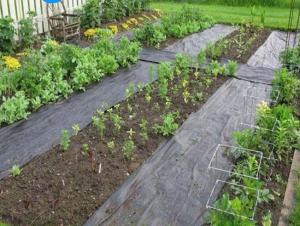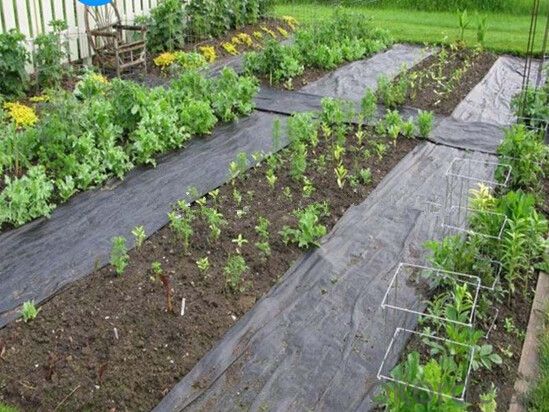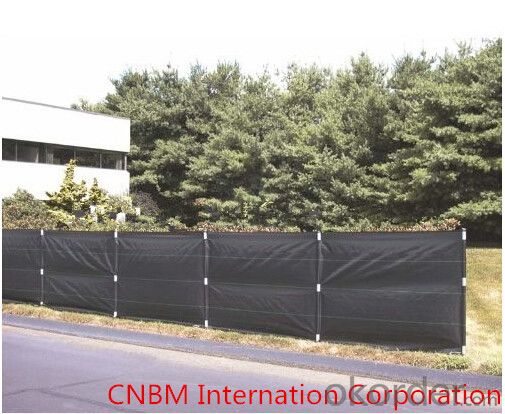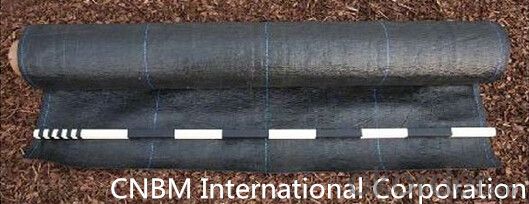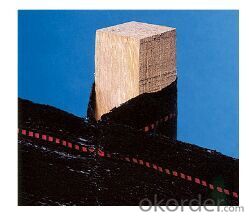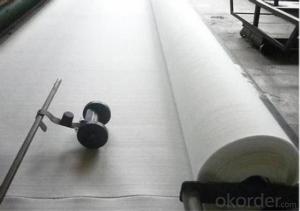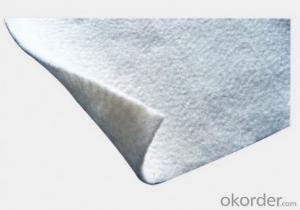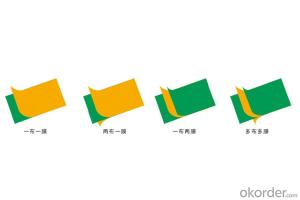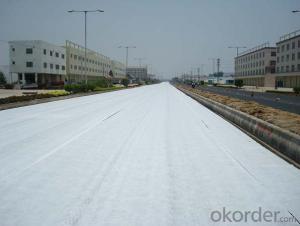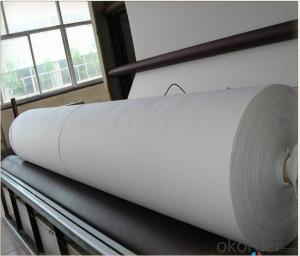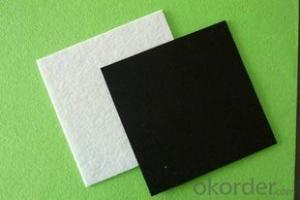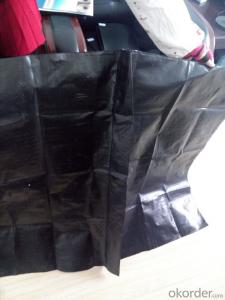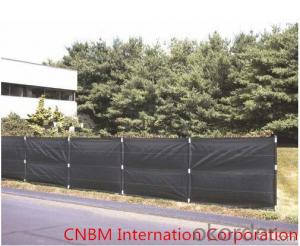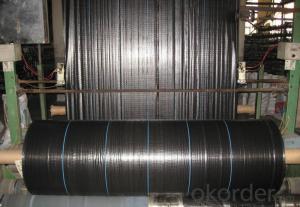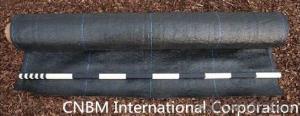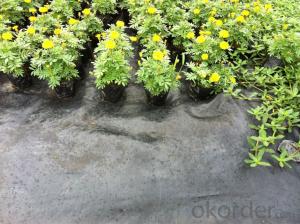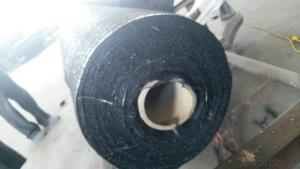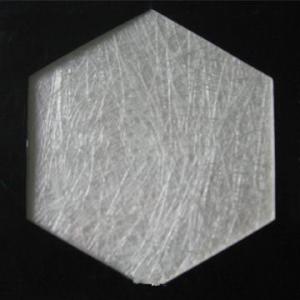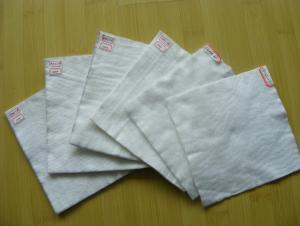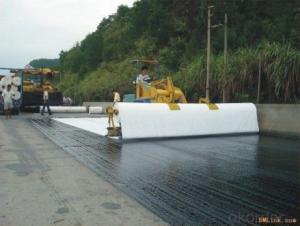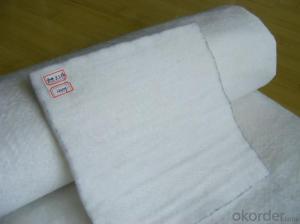Tela Geotextil Wooden Silt Fence / Polypropylene Woven Geotextile with 100gram
- Loading Port:
- Qingdao
- Payment Terms:
- TT OR LC
- Min Order Qty:
- 5000 m²
- Supply Capability:
- 1000000 m²/month
OKorder Service Pledge
OKorder Financial Service
You Might Also Like
Product Description:
1.Landscape Fabric Description:
A silt fence, also referred to as a filter fence, is a structure composed primarily of geotechnical fabric and that is used as a form of sediment control.These temporary barriers are relatively low in cost, especially when compared to the damages they can prevent. They keep loose soils from traveling into local bodies of water and they also minimize the impact that various forms of development can have on surrounding wildlife.
2. Landscape Fabric Functions and Features:
1)Excellent weed control
2)Excellent UV resistance
3)Moisture,fertilizers,air reach plants to allow for healthy soil
4)Good water and air permeability
5)Exceptional toughness and strength
6)Durable,tear-resistant,anti-rot and anti-mildew
7)Light weight,easy to install,follows natural ground contours
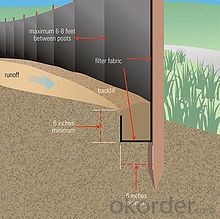
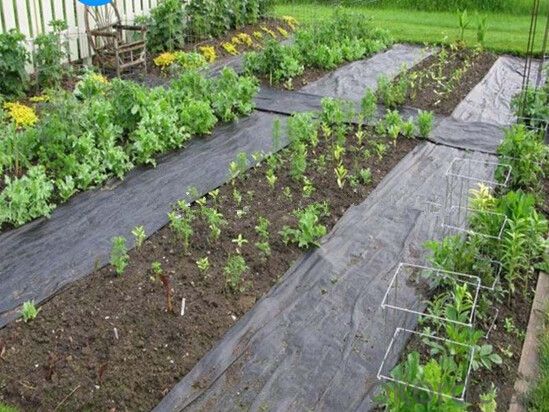
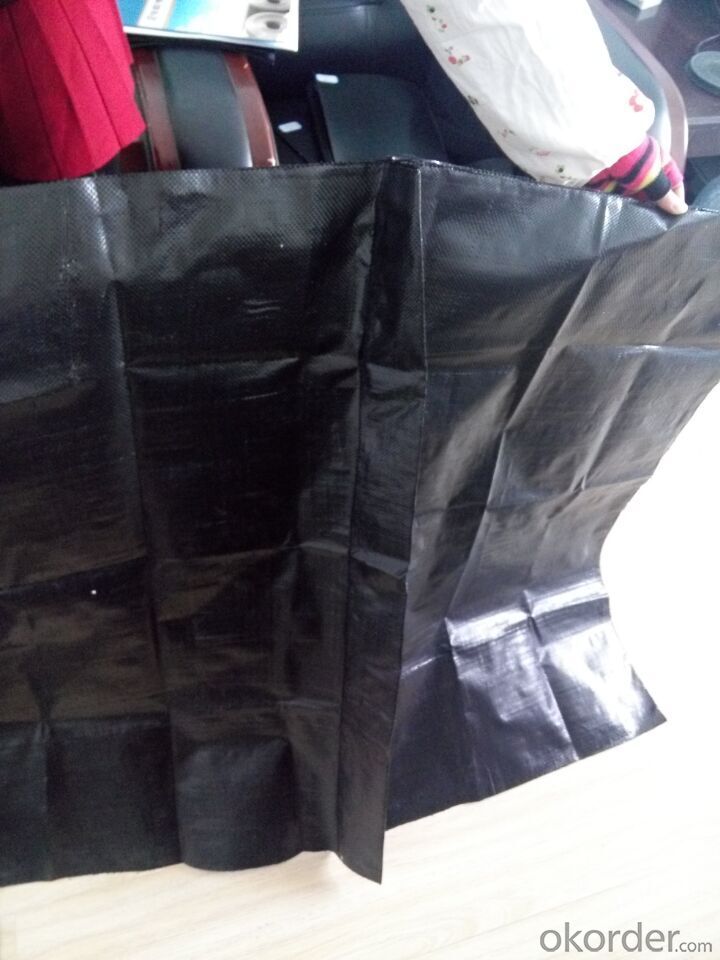
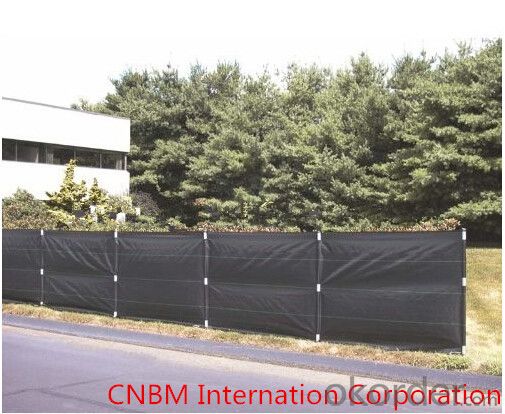
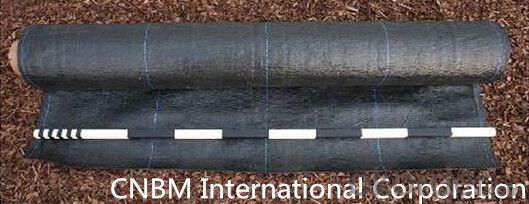
3.. FAQ:
Q1: What is your minimum order quantity?
A:The minimum order quantity is 5000 ,but it is negotiable.
Q2:What is your payment terms?
A: T/T,Western Union,Paypal,L/C...
Q3:What is your delivery time?
A:Production time usually costs 2-20 days.
Waiting to cooperate with you!
- Q: The difference between lap and stitching
- Power and load are angular and star connection. When the power supply is connected, the phase voltage of the power supply is equal to the line voltage. The line voltage of the star load is equal to the line voltage of the power supply. The phase voltage of the load is equal to the line voltage divided by the root number. When the power supply is connected, the line voltage of the power supply is equal to three times the root number of the power supply phase voltage. The line voltage of the corner load is equal to the line voltage of the power supply, and the phase voltage is equal to the line voltage. Both at the same time using the corner, the load line voltage is equal to the power line voltage, phase voltage is equal to the line voltage. At the same time using the star, the load line voltage is equal to the power line voltage, the load phase voltage is equal to the power phase voltage, phase voltage equal to the line voltage divided by the root number three.
- Q: Artificial lake can not do geotextile waterproofing? What method can not do geotextile waterproof?
- Artificial lake with geotextiles do waterproof? Artificial lake to the bottom of the water leakage. The lake design in the use of geotextile, it is not anti-seepage, it should be used for filtering. There is no use of course there will be different results. If the design has that use. If the lake is to prevent water leakage, there are many ways. 1. Laying a professional anti-seepage geomembrane, composite geomembrane; 2. Laying a layer of sticky heavier little permeability of the clay, pressure solid. 3. There are also laying a layer of geology known as GCL geosynthetics, full name is bentonite waterproof blanket. Geotextile is water seepage, the general is not anti-seepage, can be used to filter. Only in the geotextile composite anti-seepage film to prevent seepage, and composite film after the geotextile has not called geotextile, and should be called composite geomembrane. But because of habitual problems, and now there are people called the seepage geotextile.
- Q: Can geotextiles be used for reinforcement in landfills?
- Yes, geotextiles can be used for reinforcement in landfills. Geotextiles are commonly used as a geosynthetic material in landfill construction and operation. They are placed within the landfill to improve stability, prevent soil erosion, and enhance the overall strength of the landfill structure. Additionally, geotextiles help to control water flow and filter out contaminants, providing an effective solution for reinforcement in landfills.
- Q: What are the key factors affecting the filtration performance of geotextiles?
- The key factors affecting the filtration performance of geotextiles include the pore size and distribution of the fabric, the thickness and permeability of the material, the hydraulic gradient or pressure difference across the geotextile, and the presence of any clogging or blockage due to soil particles. Other factors such as the type of soil, the duration of filtration, and the geotextile's chemical and physical properties can also influence its performance.
- Q: How do geotextiles help with soil confinement in erosion control mats?
- Geotextiles help with soil confinement in erosion control mats by providing a stable base for vegetation to grow, preventing soil erosion and promoting root development. The geotextiles act as a barrier, holding the soil particles in place while still allowing water to pass through, reducing the impact of rainfall or water flow on the soil surface.
- Q: What is the geotextile material?
- Geotextile is made of staple fiber polyester, polypropylene, polyester filament, PP flat silk and other synthetic fibers through acupuncture or weaving made of geotextile, non-woven and industrial non-woven products in one. The general width of 1-6 meters, roll length of 50-100 meters, the quality per unit area of 100-600 grams square meters. According to the different production processes are: polyester / polypropylene staple acupuncture geotextile, PP flat wire woven geotextile, polyester spunbond filament geotextile, single double-sided thermal composite impermeable geotextile, woven geotextile and so on.
- Q: Can geotextiles be used in coastal revetment projects?
- Yes, geotextiles can be used in coastal revetment projects. Geotextiles are commonly used in these projects to provide erosion control, stabilize the soil, and enhance the overall performance and longevity of the revetment system. They can help to prevent the loss of sediment, reduce wave energy, and provide stability to the structure by acting as a barrier between the soil and water.
- Q: How is the strength of geotextiles determined?
- The strength of geotextiles is typically determined through laboratory testing, which involves assessing various mechanical properties such as tensile strength, puncture resistance, and tear strength. These tests help evaluate the geotextile's ability to withstand different loads and stresses, ensuring its suitability for specific engineering applications.
- Q: What are the different geotextile puncture resistance test methods?
- There are several geotextile puncture resistance test methods, including the Cone Drop Test (ASTM D1709), the CBR Puncture Test (ASTM D6241), the Ball Burst Test (ASTM D3787), and the Trapezoidal Tear Test (ASTM D4533). These tests assess the ability of geotextiles to withstand puncture forces and provide valuable information about their durability and performance in various applications.
Send your message to us
Tela Geotextil Wooden Silt Fence / Polypropylene Woven Geotextile with 100gram
- Loading Port:
- Qingdao
- Payment Terms:
- TT OR LC
- Min Order Qty:
- 5000 m²
- Supply Capability:
- 1000000 m²/month
OKorder Service Pledge
OKorder Financial Service
Similar products
Hot products
Hot Searches
Related keywords
